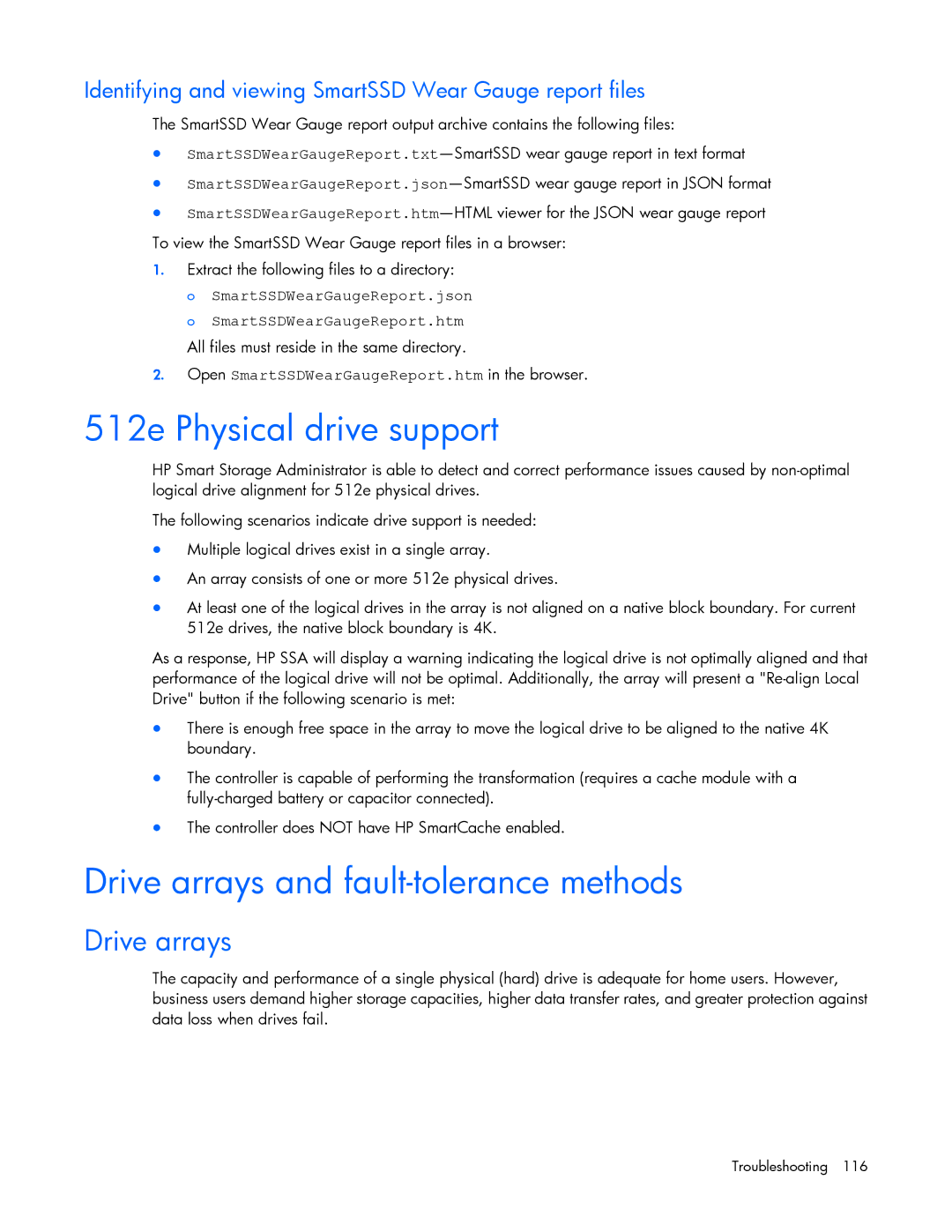Identifying and viewing SmartSSD Wear Gauge report files
The SmartSSD Wear Gauge report output archive contains the following files:
•
•
•
To view the SmartSSD Wear Gauge report files in a browser:
1.Extract the following files to a directory:
o SmartSSDWearGaugeReport.json o SmartSSDWearGaugeReport.htm
All files must reside in the same directory.
2.Open SmartSSDWearGaugeReport.htm in the browser.
512e Physical drive support
HP Smart Storage Administrator is able to detect and correct performance issues caused by
The following scenarios indicate drive support is needed:
•Multiple logical drives exist in a single array.
•An array consists of one or more 512e physical drives.
•At least one of the logical drives in the array is not aligned on a native block boundary. For current 512e drives, the native block boundary is 4K.
As a response, HP SSA will display a warning indicating the logical drive is not optimally aligned and that performance of the logical drive will not be optimal. Additionally, the array will present a
•There is enough free space in the array to move the logical drive to be aligned to the native 4K boundary.
•The controller is capable of performing the transformation (requires a cache module with a
•The controller does NOT have HP SmartCache enabled.
Drive arrays and fault-tolerance methods
Drive arrays
The capacity and performance of a single physical (hard) drive is adequate for home users. However, business users demand higher storage capacities, higher data transfer rates, and greater protection against data loss when drives fail.
